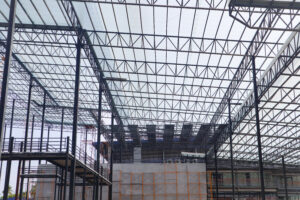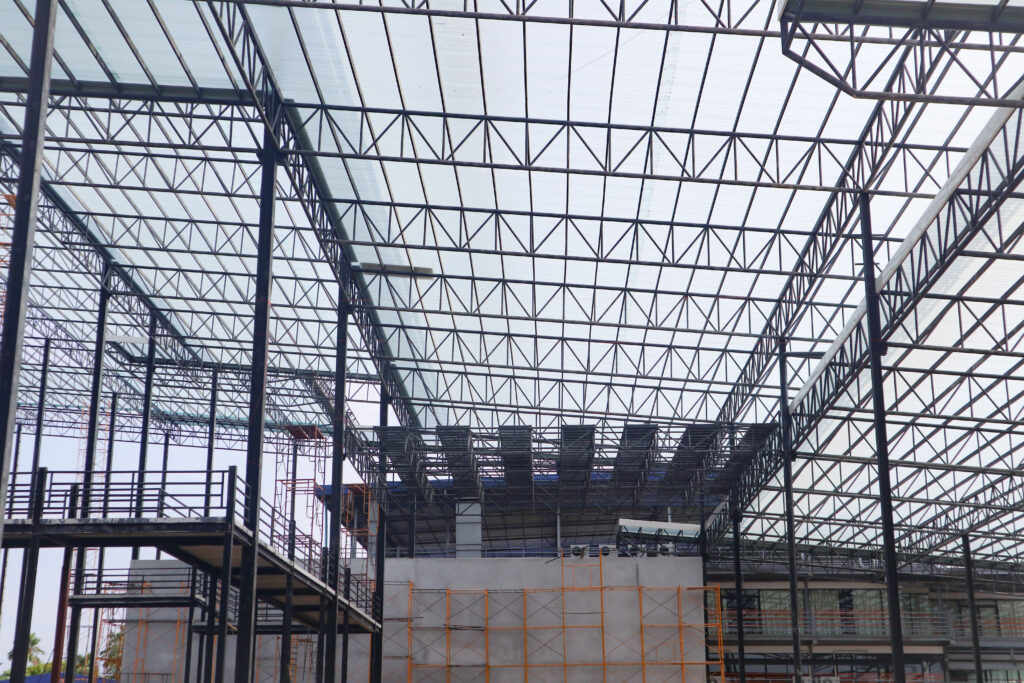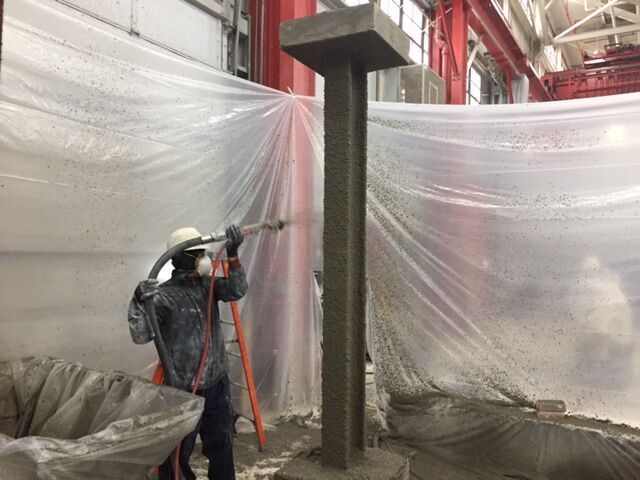
Fireproofing Methods for Structural Steel
Steel loses approximately 50% of its load-bearing capacity when it reaches 1,000°F, or 537°C, posing serious risks during fire events. Reliable fireproofing material for structural steel is essential for protecting industrial buildings and facilities, ensuring fireproofing of steelwork for safety and safe evacuation.
Fireproofing Defined
Fireproofing is a protective measure that prevents structural materials, like steel, from reaching critical temperatures during a fire. By using sprayed fire-resistive material, or SFRM, and other protective layers, fireproofing enhances a building’s safety and stability during fire events.
Two Fireproofing Categories: Active vs. Passive
Fireproofing steel involves both active fire protection systems, which use sprinkler systems or extinguishers, and passive fireproofing solutions, which apply fireproofing materials directly to steel surfaces. These layers act as a barrier, reducing heat transmission and delaying structural failure.
Fire protection is also specified based on potential fire types:
- Cellulose Fires (wood-based): Slower to develop, reaching 2,000°F over four hours, seen in schools, hospitals, and residential buildings.
- Hydrocarbon Fires (fuel-based): Rapidly reach 2,000°F in five minutes, essential for industrial and petrochemical facilities.
Applications for Structural Steel Fireproofing
The purpose of fireproofing is to protect critical structural components in industrial settings, such as:
- Pipe Racks: Using fire proofed materials helps these structures maintain integrity in high-heat conditions.
- Process Area Structural Steel: Common in fire-prone areas, needing robust steel fireproofing.
- Vessels, Skirts, Saddles, and Legs: Ensures prolonged stability under extreme heat.
- Offshore Decks and Bulkheads: Critical for offshore fireproofing, providing essential structural protection.
- Steel Beams and Columns: Spray-applied fireproofing for steel beams and columns is essential to shield these load-bearing structures and prevent collapse.

Structural Steel Fireproofing Code Requirements
Fireproofing code requirements vary by region, generally aligning with standards from organizations like International Code Council (ICC/IBC), National Fire Protection Association (NFPA) or NORSOK.
Fire-resistance ratings, typically expressed in hours, reflect how long fireproofing materials can withstand fire under specific conditions.
Testing for Fire-Resistance:
- ASTM E119 and UL263 for cellulose fires, where the temperature reaches 2,000F, or 1,093C, over four hours
- UL1709 for hydrocarbon fires, where temperatures reach 2,000F in five minutes and hold for the test duration.
Additional tests, such as Jet Fuel, Pool Fire, Blast, and Hose Stream testing, assess fireproofing resilience in specialized applications. Engineers and architects can refer to directories like Underwriter’s Laboratories to determine suitable ratings. Local building codes, model standards, and design specifications provide guidelines for project-specific requirements.
Traditional Structural Steel Fireproofing Methods
Spray-Applied Fire-Resistive Material (SFRM)
Spray-applied fire-resistive material (SFRM) is a commonly-used, cost-effective solution used for fireproofing steel beams and columns. Applied as either a wet or dry spray, SFRM products are designed to increase a structure’s resistance to high temperatures. Composed mainly of cement and gypsum, with mineral additives, SFRM can also offer limited acoustic and thermal insulation.
While effective, SFRM is not ideal for environments with high moisture or freeze-thaw cycles, as these conditions can degrade the material. Additionally, it provides minimal corrosion protection, making it essential to prepare surfaces thoroughly with blasting, priming, and reinforcement, especially in corrosive settings. Although SFRM is affordable, these preparatory steps can impact project costs.
Intumescent Coatings
Intumescent fire-resistive materials (IFRM) expand up to 100 times its original thickness, when exposed to heat, creating a thick barrier to protect steel. These lightweight coatings are popular for exposed steel surfaces, preserving design aesthetics without compromising fire protection.
However, IFRM are highly vulnerable to environmental conditions during application, which can affect performance, and they are more expensive than other fireproofing options, especially for higher fire ratings. While IFRM provides some corrosion protection, the application process, including surface preparation (blasting, primers, lath/attachments, etc), can be costly and time consuming.
Rigid Board Fireproofing
Rigid board fireproofing systems involve attaching fireproofing materials in board form to beams and columns, suitable for varied climates. Suitable for out-of-sequence construction, this method is effective in various climates, including areas prone to freezing.
Rigid boards, however, are slower and more expensive to install and do not offer corrosion protection, often requiring additional preparation like blasting, primers, or anti-corrosion paints, adding to project costs.
Flexible Blanket Systems
Flexible blanket systems combine fire, thermal, and acoustic insulation, providing lightweight protection without toxic smoke production. They are easy to install on complex shapes but lack customizable thicknesses and require additional fasteners.
These blankets offer no corrosion protection, so pre-installation steps like priming and blasting are often necessary. Limited manufacturers also mean fewer choices for this type of fireproofing.
Portland Concrete
Once widely used for fireproofing, Portland concrete remains a choice for large steel elements, such as columns. While it offers durability, it requires significant volume, has a high carbon footprint, and lacks design versatility.
Concrete fireproofing offers minimal corrosion resistance, so it typically requires additional protective measures, including primers or galvanizing, to maintain steel integrity.
Advances in Fireproofing for Structural Steel
Traditional fireproofing methods often fall short in meeting the diverse needs of modern projects, particularly those in complex or harsh environments. Spray-applied fireproofing methods have evolved to address the diverse needs of construction and industrial environments. These advancements focus on improving fire resistance, environmental impact, and ease of application while meeting strict fire safety standards.
Newer formulations also support sustainable construction. Materials like FP250 exemplify how innovations in fireproofing technology meet rigorous safety and sustainability demands, offering practical solutions for diverse applications.

Discover Superior Steel Fireproofing
Ensure your project is protected with the best fireproofing technology available. Contact us to learn how FP250 outperforms traditional methods and can meet the unique demands of your application.

 Heat and Chemical Resistant Concrete Solutions for Industrial Applications
Heat and Chemical Resistant Concrete Solutions for Industrial Applications